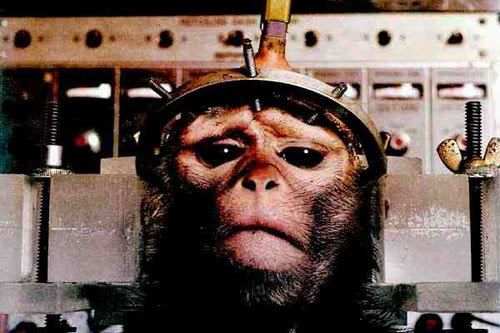I think this statement is both valid and invalid. The Holocaust was an event that we, as those who can only study it, will never feel for ourselves. Thus, making a comparison between the feelings of Holocaust victims and any other event, such as slaughterhouse victims, is partially unfounded, because we are not feeling either of these things. What can be compared is the outside perspective- such as the patterns we see in treatment and behavior. I do not think this is wrong; as described in Earthlings, "one group of living beings anguishes beneath the hands of another." [2] This is a true parallel, it does not suggest that the Holocaust victims were any less victims, nor that animals are any more equal to humans, rather it simply states patterns of behavior. An analogy such as this serves more as an eye opener to patterns of behavior than a factual compare/contrast between two events. The point isn't to say that animals are Holocaust victims, but to suggest that our treatment of animals is wrong, as was the treatment of Jews. As Elizabeth Costello states, "Each day a fresh holocaust, yet, as far as I can see, our moral being is untouched." [3] This seems a desperate attempt to get people to listen, because when it comes to topics that suggest problems with our moral behavior, it is oftentimes easiest to stubbornly resist. Likewise, Derrida describes a different sort of holocaust, much like the treatment of animals, where it is humans that are "more numerous and better fed... [to be] destined in always increasingly numbers for the same hell.." [4] Again, I don't believe that Derrida is trying to say that the holocaust is equal to our system of animal treatment. He replaces the animals in our system with humans as an attention grabber- a way, successful or not, to get people to take the situation more seriously. Once again, Costello attempts to get her audience to sympathize with animals, to attempt to become them for an instant: "I can think my way into the existence of a bat or a chimpanzee or an oyster.." [5] Although I think this is a great strategy to create caring feelings towards another being, it does not necessarily create an accurate representation of their lives. I usually try to stay away from comparisons between events such as the holocaust or slavery and animal treatment. Although I think the comparisons are valid, many people do not. I talk to people so that they listen to me, not shut me out, and if people are offended, then I am not reaching out to them properly.
As these pictures show, the treatment of animals is serious enough to be described in itself. It does not need to be compared to the holocaust in order for people to care about it.
 picture 1: [6]
picture 1: [6] picture 2: [7]
picture 2: [7]Endnotes:
[1]: Animal Humanities Course Packet: The Lives of Animals, pp. 297
[2]: Animal Humanities Course Packet: Earthlings Screenplay, pp. 164
[3]: Elizabeth Costello: pp. 80
[4]: Animal Humanities Course Packet: "The Animal that therefore I Am" pp. 226
[5]: Elizabeth Costello: pp. 80
[6]: http://i28.photobucket.com/albums/c212/luvrich/monkey2.jpg
[7]: http://www.all-creatures.org/anex/chicken-slaughter-02.jpg
No comments:
Post a Comment